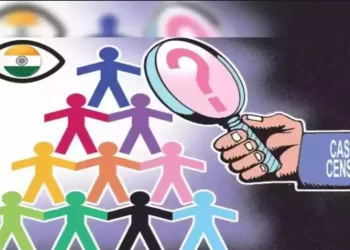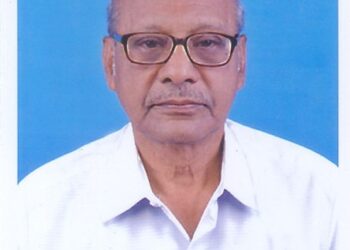‘As the Commission proposes an overhauling secularisation of various socio-religious-cultural practices that have been the mainstay of thousands of religious and ethnic communities since times immemorial, the path ahead is not going to be free from hurdles’
Faizan Mustafa
Expert in constitutional law
Anant Sangal
Advocate in the Supreme Court of India
The Law Commission of India should aim to eliminate only those practices that do not meet the benchmarks set by the Constitution of India.
‘As the Commission proposes an overhauling secularisation of various socio-religious-cultural practices that have been the mainstay of thousands of religious and ethnic communities since times immemorial, the path ahead is not going to be free from hurdles’
On June 14, the Law Commission of India decided to solicit views and proposals from the public about the Uniform Civil Code (UCC). After a hiatus of just five years, when the Commission had concluded that the ‘UCC is neither necessary nor desirable’, the move now is one that keeps the pot boiling on one of India’s most ideologically as well as politically rivalled issue. Though we believe that the enactment of the UCC in piecemeal manner would be in tune with the spirit of Article 44, the attempt here is to invite attention to one particular consideration that must weigh with the Commission as it undertakes this exercise de novo.
Autonomy versus authority
The question of personal laws is basically the question of personal and religious autonomy versus the state’s authority to reform familial relations. Since each religious group has cultural autonomy, it is thus being argued that the community should itself come forward to seek reforms. This is the justification for the adoption of internal law reform or voluntary UCC. In fact, the Special Marriage Act, 1954 and the Indian Succession Act, 1925 are nothing but examples of voluntary adoption of the UCC though the recently enacted love jihad laws by prohibiting inter-faith marriages basically violate the spirit of Special Marriage Act.
There are also regional differences, i.e. Kerala had abolished the Hindu Joint Family in 1975; Muslim marriage and divorces are to be registered in Bengal, Bihar, Odisha, Jharkhand under the 1876 law, and in Assam under 1935 law, and adoption was permissible to Kashmiri Muslims.
At present, not just Muslims but even Hindus, Jains, Buddhists, Sikhs, Parsis, and Jews are governed by their own personal laws. Accordingly, believe it or not, it is the religious identity that determines which personal law would apply to a group of individuals. Even reformed Hindu Personal Law under the Hindu Marriage Act, 1955 does insist on solemnisation of marriage, through saptapadi (seven steps around fire) and datta (invocation before fire). Section 7(2) of the Act, just like Manusmriti (8.227), provides that marriage is completed on the seventh step. Sapinda relationship, adoption and Hindu Joint Family rules too are based on the Hindu Personal Law.
Surprisingly when two Hindus marry under the Special Marriage Act, 1954 (Section 21A inserted in 1976), they continue to be governed by Hindu Personal Law, but if two Muslims marry under this legislation, the Muslim Personal Law (MPL) would no longer govern them. Interestingly, a person who renounces Hinduism too continues to be governed by the Hindu Personal Law.
The Constitution was not the starting point but a mere culmination of India’s long-standing integrative traditions. In addition to the provisions that outlaw discrimination in all its forms, the Indian Constitution’s commitment to cultural accommodation is visible through a near-absolute fundamental right in Article 29(1) dedicated exclusively to conserving the distinctive culture of all citizens. However, do Muslims of India have the courage to argue that polygamy or arbitrary unilateral divorce even in anger or while in an intoxicated state could be considered a part of their culture?
Unity more than uniformity
That said, the Commission must bear in its recommendation that for a diverse and multicultural polity such as India, the proposed UCC must be emblematic of India’s ‘mosaic model’ of multiculturalism. The logic is invariably obvious — a homogenising lithification of identities must not become a mirage for flourishing diversity (something that has consistently remained peculiar to the American model of multiculturalism). After all, unity is far more important than uniformity. The British brought homogeneity amongst Hindus and Muslims by grossly undermining heterogeneity within the two religious communities.
Under the Indian Constitution, the right to cultural autonomy defends the Indian model of multiculturalism. Prominent scholars on multiculturalism such as Rochana Bajpai suggest that the Indian Constitution offers two major approaches with respect to accommodation of difference — integrationist and restricted multicultural. While the affirmative action policies largely land in the first approach’s camp, for Ms. Bajpai, “state assistance to minority cultures has been seen as an illegitimate concession […]” and is often termed as ‘appeasement of minorities’.
This, as Ms. Bajpai furthers, leaves cultural difference without any robust constitutional normative underpinnings. In short, it is through these two approaches that the Constitution makes way for cultural accommodation and a celebration of group differences. Accordingly, the 21st Law Commission (2015-18) had boldly favoured equality between men and women in communities rather than aiming for equality between communities. A just code should be the primary goal as just laws are more important than a mere one uniform law.
Having this discussion as the backdrop, India’s tryst with preserving its multicultural diversity is often found at the crossroads with values such as secularism. Despite secularism being a fundamental tenet governing the Indian polity, India decided not to adopt the French model of laïcité, which strictly prohibits bearing any religious outfit or marker in public; that considers religion in public as a threat (and not a prominent promoter) to the nation’s secular fabric — thus pushing it within only the four walls of the domestic household. Indian society, therefore, ‘accommodates’ and not just ‘tolerates’ the wide array of group and ethnic differences.
When groups claim and effectuate their multi-ethnic traditions without impinging on the rights and liberties of their fellow citizens, their traditions and values acquire the status of social mores for they fulfil a much broader purpose of social and national integration.
However, a claim of such broad nature invites limitations inherent — in the name of personal laws and practices, what deserves legal protection and promotion and what does not. Right to cultural-relativism cannot justify continuation of unjust and discriminatory personal laws. Such provisions of the personal laws must be made consistent with substantive equality and gender justice goals espoused in the Constitution.
Hurdles on the path ahead
Simultaneously, we must understand that when a community feels threatened in any way, whether rightly or wrongly so, the collective esteem of its members becomes woven to the community, and community allegiance becomes much stronger. Therefore, one hopes that the Law Commission of India would not contribute to the rise of reactive culturalism amongst different communities in India, including Muslims. The Muslim community too must understand that the MPL and Islam are not one and the same. The MPL is a jurist given law and is not entirely divine.
In fact, it is more appropriate to call it Anglo-Muhammadan law that was derived in certain matters from the erroneously translated secondary sources rather than the Koran and Sunna of the Prophet. British courts treated juristic opinions in the MPL on a par with statutory laws enacted by the legislature and by insisting on the British doctrine of precedent, they further brought in a lot of rigidity in the MPL. If MPL reforms that rely on inter-school borrowing could be accepted by the Ulema way back in 1939, why cannot this be done today? Let the Muslim clergy come forward and lead the MPL reform process by identifying the discriminatory and oppressive issues and adopt the views of progressive jurists.
As the Commission proposes an overhauling secularisation of various socio-religious-cultural practices that have been the mainstay of thousands of religious and ethnic communities since times immemorial, the path ahead is not going to be free from hurdles. In the words of political philosopher Iris Young, as the value of social difference is more relational and is itself a product of social processes, we believe that it will be incumbent upon the Commission to strike a fine balance as it should aim to eliminate only those practices that do not meet the benchmarks set by the Constitution.
(Courtesy: The Hindu)









